#Nefertiti the Beautiful One Has Come
Text
"Nefertiti, the Beautiful One Has Come": Cecil Taylor's Avant-Garde Odyssey
Introduction:
In avant-garde jazz, certain albums emerge as sacred artifacts, encapsulating the spirit of experimentation and the unbridled creativity of their creators. One such monumental work is “Nefertiti, the Beautiful One Has Come,” a live album by the Cecil Taylor Unit recorded at Café Montmartre in Copenhagen, Denmark, on November 23, 1962. Lasting almost two hours, this recording is not…

View On WordPress
#Cecil Taylor#Cecil Taylor Unit#Classic Albums#Henry Grimes#Jazz History#Jimmy Lyons#Nefertiti the Beautiful One Has Come#Sunny Murray
6 notes
·
View notes
Note
Nefretiti
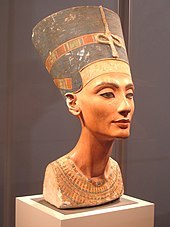
Neferneferuaten Nefertiti, or Nofretiti, (14th century BC; 18th dynasty, New Kingdom) is perhaps best well known for her bust, which has become world famous for its' uniqueness and craftsmanship. But Nefertiti played a role in one of the most controversial eras of Egyptian history. She is one of the most well-recorded Queens of ancient Egypt, but very little is known about her actual life besides conjecture.
Let's start with dissecting her name. Most people will divide her name up into the words Nefer and Titi; Nefer being a common word in ancient Egypt meaning beauty and goodness. In actuality, her name is divided up as neferet - iiti, more classically transliterated as Nfr.t-jy.tj. The t belongs to nefer as it is the denomination of a female pronoun in the ancient Egyptian language, and the jy.tj means coming or has come. All together, her name means The Beautiful One Has Come.
Nefertiti is indeed beautiful; she is, as mentioned earlier, one of the most depicted Queens of Egyptian history, with her image appearing on a great number of walls, in carvings and in paintings, and of course, statues. The reason for this is partly due to her marriage to the Heretic Pharaoh, Akhenaten. To understand this connection a little better, one must have some background about the Pharaoh Akhenaten.
Akhenaten and Nefertiti were married close to when Akhenaten was coronated, which was for him around the age of 16 or 18, and for Nefertiti was around the age of 12 to 16. Akhenaten is fairly well known Pharaoh. His controversial history has made sure of that, despite the fact that after he died, the following Pharaohs did everything in their power to rid Egypt of his memory by destroying his city and erasing all images of him. Akhenaten started off as Amenhotep IV––a name which connects him to the Egyptian God Amun, often associated with the sun, but representing hiddenness, and one of the highest and most powerful Gods of Egypt. The cult of Amun at the time of the New Kingdom was perhaps the most widespread cult of worship in Egypt, and the 18th dynasty, to which the Pharaoh Amenhotep IV belongs, is the first dynasty of the New Kingdom.
This was, apparently, unsatisfactory for the Pharaoh Amenhotep IV. Still, for the first 5 years of his reign, he followed Amun's cult, until he made a dramatic religious change to worship of the Aten; a new God that represented the sun disc. Aten was a faceless God, and the first mention of the word aten was in the Old Kingdom, and back then, it meant 'disc'. While Aten was worshipped as a mere aspect of Ra, the Sun God, in Amenhopte IV's father's (Amenhotep III) reign, Amenhotep IV decided that the Aten should be the primary deity worshipped. Amenhotep IV changed his name to Akhenaten, and worshipped the Aten above all else, as the nurturer of the world, the creator, and the giver of life. This would've likely been fine; however, Akhenaten decided that the Aten should be the only God worshipped, and banned the worship of all other Gods.
Ancient Egypt had been polytheistic since it's very earliest beginnings. Akhenaten essentially introduced monotheism out of nowhere and insisted all his subjects follow him in his new faith, outlawing all other worships, and forcing many priests to abandon the temples of other Gods. Additionally, ancient Egyptians were very accustomed to using an image to worship a God; the image usually being an animal, human, or an animal-headed human. But the Aten was a disc. Although the Aten had been worshipped in Amenhotep III's reign as a falcon-headed solar deity, Akhenaten insisted that the Aten be only shown as a disc with rays reaching out, with small hands on each ray.
Obviously, this caused a lot of dissent in Egypt and the following reigns.
Another interesting point of contention was the fashion in which the Aten interacted with the royal family. In the past, the Pharaoh was connected to the Gods more than any other human––he was the bridge between the two worlds, and the mediator between humanity and the Gods. This was, generally, not a task shared by the whole of the royal family. But in Atenism, the Aten would only shine its life-giving rays onto the Pharaoh and his royal wife; in this case, Akhenaten and Nefertiti. Thus the people, if they wanted to experience the life and love of the only, legally worshippable God, would have to go through the Pharaoh and his wife. This power would've likely, at least in part, been given to the royal family in order to cement their changes, and protect them from any backlash.
This massive change in culture and religion had great affects on ancient Egypt at the time. The style of ancient Egyptian art changed drastically, and the figures of the royal family were now represented as sinuous and gangly, often with large, sagging bellies and breasts, and curved, graceful facial features. Since Akhenaten and Nefertiti, as the royal family, were so important to this new religion of Atenism, the two of them were depicted in a number of scenes––many of them unique to the Amarna period, which is the name for the period in which Atenism was installed. These scenes were familial in nature; depicting the royal couple sitting with their children and bathing in Aten's life-light, throwing gifts down to the people, and engaging with one another. This is one of the main reasons that Nefertiti is the most widely-depicted Queen of Egypt. Not only is she depicted often as the wife of Akhenaten, but she is drawn in her own right––she makes offerings to the Aten on her own, and there are depictions of her smiting the enemies of Egypt, which is a role traditionally given solely to the Pharaoh.
Another piece of evidence for the high status of Nefertiti comes from this famous depiction of the royal Amarna family:

Here, Nefertiti sits on the right side, opposite her husband, Akhenaten. Akhenaten is holding up one of his children, and Nefertiti holds another two children; three of the six daughters that Nefertiti would bear for Akhenaten. The children are depicted in an almost grotesque, alien fashion, though it's not something you can really fault the artists for; it took a long time for artists across the world to realize that babies are not, in fact, just tiny humans, and that their proportions are different. Still, the style of the Amarna period is not helpful; with their large, oval heads, thin limbs, and sagging stomachs, it is difficult to imagine that anyone could be traditionally, Egyptian beautiful. Yet there is still a strange beauty to it; the sagging bellies are meant to call to mind Hapi, a God of great fertility, and the artist's ability to capture the facial features and emotions of their subject is amplified by this new and forgiving artstyle.
This image is a house altar. What that means is that people were encouraged, and evidentially did, worship the royal family in their homes, which is somewhat unprecedented. House altars were usually for Gods such as Tawaret and Bes, who were protectors of the household. But now, with traditional Egyptian religion banned, the typical house altar was now a shrine to Akhenaten and Nefertiti, and by extension, their children, which again shows the importance and power bestowed upon not just the Pharaoh, but his wife as well, as the two are represented in equal size.
Another interesting note about this particular house altar is the thrones on which Akhenaten and Nefertiti are seated. While Akhenaten's seat is mostly blank, Nefertiti is seated upon a throne reserved only for Pharaohs, the reason for this being the decorations which depict the Sema-Tawy ritual; the conjoining of the two lands.
Some time during the course of Akhenaten's reign, he decided to move the capital of Egypt to a deserted stretch of land along the Nile Valley, and called the new city Amarna, for which the period was named after. Here, the royal family took up residence, and this is where the cult center of the Aten would carry out its worship. This is also where Akhenaten royally screwed up his duties in foreign diplomacy, but that is a story for another day.
Before moving to Amarna, Nefertiti had three daughters in Thebes, the previous capital, and three more daughters in Amarna. In order, her daughter's names were Meritaten, Meketaten, and Ankhesenpaaten; then in Amarna, Neferneferuaten Tasherit, Neferneferure, and the youngest, Setepenre. It was to a lesser wife of Akhenaten's that the famous boy Pharaoh Tutankhamun was born, and originally, his name was Tutankhaten.
During his reign, when concerning Nefertiti, Akhenaten placed special attention upon her and loved her dearly, which is why she was one of the most powerful Queens of Egypt. Akhenaten described her as "possessed of charm" and "sweet of love", that "one is happy to hear her voice," and that "contents the Aten with her sweet voice". The two husband and wife were rarely depicted separately, and Akhenaten gave Nefertiti the title of 'heiress', although she was not the daughter of a King. Instead, what many scholars believe Akhenaten meant by this, was that she was to be his successor.
After Akhenaten's death, two Pharaohs ruled for a short time before Tutankhamun took over, and one of those Pharaohs is believed to have possibly been Nefertiti under the name of Neferneferuaten, which means beautiful is the beauty of the Aten. It is still debated whether this was in fact Nefertiti, but given that Nefertiti had given herself the name Neferneferuaten far before Akhenaten's death, and the elvated status gifted by her husband, it seems somewhat likely.
In essence, due to the circumstances of her life and her husband, Nefertiti was elevated to a status that never came before or after her life. Women in ancient Egypt were awarded the same rights as a man, but the wife of the Pharaoh was never depicted as equal to the Pharaoh in such a fashion, as being Pharaoh meant being the intermediary between the heavenly and the earthly, and was a special accorded honour. Nefertiti, perhaps due in part to her charisma and beauty, was given a position equal to the Pharaoh, which never happened unless it was a woman who was becoming Pharaoh. As controversial as Akhenaten's reign was, he did love his wife greatly.
I want to share my opinion on this subject a little, which is essentially to say, that I don't like Akhenaten and I don't try to hide it. His worship of the Aten is alright, but it is the banning of all other worship which rests very uneasily in me. That being said, there is a good source which goes more into detail about Nefertiti, and it is very pro-Akhenaten and anti-ancient Egyptian religion, instead glorifying the monotheism of Atenism and such. Still, it is a valuable resource; Nefertiti and Cleopatra: Queen-monarchs of Ancient Egypt, by Julia Samson, and can be found on Internet Archive here.
80 notes
·
View notes
Text

Look at all the stuff in that mansion. It's full, in that carefully-organized-by-a-designer way, and it's fantastic--and it's also utterly, horribly terrifying and makes me sad on behalf of MK1 Johnny Cage, what little I can see. Because as much money has been splashed around, as glorious and gorgeous as that Cage’s Mansion stage is… that's a showpiece, not a home.
Johnny has Sento, a true Japanese katana with a history--and it's famous enough, presumably, he'd know its name. It's on display in a really nice setup with all its elements neatly aligned and included so you can see every bit of it.
He has a very fancy glass chandelier, and what looks like a bust of Nefertiti. Open windows and he keeps the temp at 72F. Lots of white furniture, the random vases full of sticks (aromatherapy diffusers?), a variety of bar carts. Abstract art and sculpture, and what may be a bra abandoned by the one chair and ottoman by the fireplace.
One chair and ottoman. Not two, where you'd expect to cuddle up with family if you had one, or a partner. Just one.

This place can seat dozens. There are at least four discrete seating areas (maybe five?) on the bottom floor, plus the infinity pool, and an outdoor porch/patio. Then there's the second floor and all its seating that we can glimpse. It’s made for filling with people, and not in a lived-in dinner parties and kids running around kind of way. This is a place you fill with people for parties. It's a place you expect to need dozens of chairs and bottles and bottles of liquor for your get-together. But there's very little Johnny on display.
It's all about external appearances- the bust of Nefertiti is a well-known piece of art, and historically she was considered an icon of feminine beauty. He's got one of the world's most beautiful women to look at, a fancy Japanese katana, and yet all of it smacks to me of a man who is desperate to find pleasure, to chase the high in acquisitions and throwing big parties and having lots of people, to drown and forget the emptiness inside.
We don't see pictures of people here. No photos of family, of a girlfriend, or even of himself (no posters or award photos on the wall). Johnny is a man on his own, and anyone who comes to his place is an ephemeral guest, leaving very little of themselves behind. What there is of him is hidden away from public view, where perhaps only a few guests would get to see--and if we're stripping down to bras in the main space and then heading to skinny dipping in the pool, it'll be a wonder if they make it to a bedroom. There's no dining room here, or kitchen (that we see)--all those private areas are hidden. All public-facing here, all carefully cultivated and maintained for appearances.

I think this new Johnny, the little bit we've seen, is hungry for something. He wants something and he doesn't know what it is. Acting lets him chase that; maybe he'll find what he's missing in a role, in a mindset, in a co-star. Maybe he's tried to buy things and see if one of them will fill the hole in him, but nothing takes. Maybe if he surrounds himself with enough people, he'll meet The One (or two, if it's a poly situation). But right now... he's flying solo. This isn’t a place you raise a kid in, curl up with your significant other on a couch in front of the fire and laugh or watch TV (is there even one?).
It's an ostentatious display of wealth and a desire to be a party animal, to be the one people come to hang out with, the social butterfly that has alcohol and plenty of space. I think Tony Stark would absolutely be comfortable in a place like this (in fact, that's what my first thought was - MK/MCU mashup when?), but what we're missing is the equivalent to Tony's lab and bedroom. There's no passion here on display, nothing that makes this an individual, unique home that says "Johnny Cage" on it. He's presenting a face to the world, and hiding the rest away where he has to be a real person who eats and sleeps. There’s a scene in the MKX comics where Sonya is gearing up for an op in their kitchen, and the incongruity is great, Johnny stumbling out in fuzzy slippers and bathrobe and her checking her gun with the fruit bowl on the counter. That wouldn’t happen here; that’s too human, too vulnerable, for this Johnny.
Until - I hope - he meets The One, and realizes that he can stop chasing after external happiness because he’s got somebody who makes all those paintings and awards pale in comparison. Someone who's worth putting another chair next to the fireplace for, maybe making that pristine mansion a little messy for. Someone who's going to shake him down to his well-heeled shoes and upend his world.
And if MK1 isn't going to give him someone, well. That's what fanfic is for.
#mortal kombat#headcanons#johnny cage#mk1#character analysis#meta#i want it to be cageblade i really do#and that's what fanfic is for
206 notes
·
View notes
Text


Painting Below: Nefertiti by Joseph Skala
Nefertiti, whose name means “a beautiful woman has come,” was the queen of Egypt and wife of Pharaoh Akhenaton during the 14th century B.C. She and her husband were known for a religious revolution, in which they worshipped one god only, Aton, or the sun god, and promoted Egyptian artwork that was radically different from its predecessors. Nefertiti is best known for her painted sandstone bust, which was rediscovered in 1913 and became a global icon of feminine beauty and power.
42 notes
·
View notes
Text
Egyptian pharaoh names but I’ve turned them into ancient cat names
1. Tutankhbastet (Tutankhamun)
This is the most obvious name on this list because literally all I’ve done is change out the name of one god for another god. I’m not doing that for any of the others I promise.
King Tutankhamun is the one pharaoh everybody knows about, which is ironic since his birth name literally means “the living (ankh) image (tut) of the Hidden One (Amun).” (“Tut” can also be translated as “likeness” or “statue.”)
Amun was the Egyptian god of, uh… stuff (he’s hidden. His whole deal is that he’s hidden). Bastet was the Egyptian cat goddess. Sometimes she was portrayed as a lady with a cat head, but sometimes she was just a cat. If you switch Amun’s name out for Bastet’s, it becomes “the living (ankh) image (tut) of the Cat Goddess (Bastet).” Truly, a name that only the most dignified and elegant cats deserve.
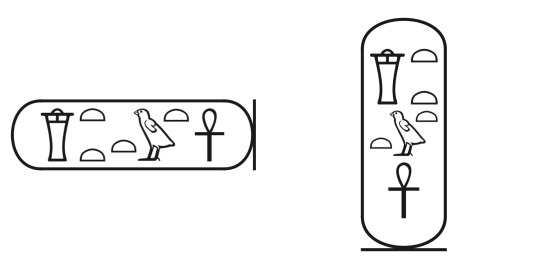
Transliteration: twt-anx-bAstt
You could also say it “Tutankhbast” if you prefer.
2. Hatmiushepsyu (Hatshepsut)
Hatshepsut’s name means “the foremost (hat) of noblewomen (shepsut),” and it turned out to be really good name for her, since she became pharaoh and all. If you want to change it to “foremost of noble cats” it becomes Hat-miu-shepsyu, “miu” meaning “cats” and shepsyu meaning “noble.”
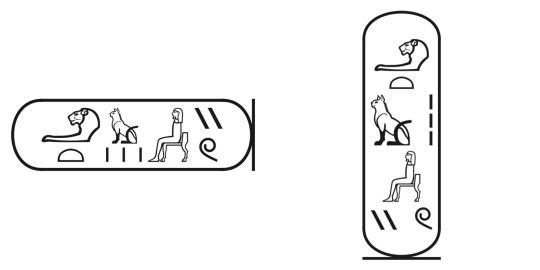
Transliteration: HAt-miww-Spsyw
3. Nedjestiti (Nefertiti)
I am aware that calling Nefertiti a pharaoh is controversial since there’s a chance that Neferneferuaten might have been her daughter and not her. But finding names of pharaohs that you can do this to and are also popular enough to be recognized is hard so shush.
Nefertiti was supposedly the most beautiful woman in the ancient world (although we can’t confirm that because Nefertiti and all the other ancient women are now dead). Her name fits this, because it means “the beautiful one (nefert) has come (iti).”
“Nedjes” is a word meaning “small,” so changing the name to Nedjest-iti makes it mean “the small one has come.”
This is a good name, because if your cat is bad then you can use it in a derogatory sense to call them a penniless little beggar. Unfortunately, it only really works for girl cats, because the masculine version is “Nedjesiu,” which loses the pun quite a bit.
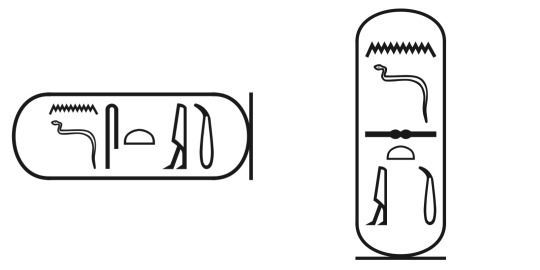
Transliteration: nDst-ii.ti
4. Miumer (Narmer)
Narmer was the first pharaoh to rule over all of Egypt, and like other early pharaohs the only name used for himself was his Horus name instead of his throne name or birth name. (You know that TS Elliot poem about how cats have a bunch of different types of names? Pharaohs are like that too). Because Narmer was his Horus name, it was written inside an enclosure called a serekh instead of a cartouche.
The name itself means something like “striking (mer) catfish (nar)” or “fierce (mer) catfish (nar).” To change it to “striking cat” or “fierce cat,” you need to change nar to miu: Miu-mer. (Yeah the English translations of this one are stronger wordplay than the Egyptian versions, sorry.)
If your cat is a girl then the name should be Miutmer instead.
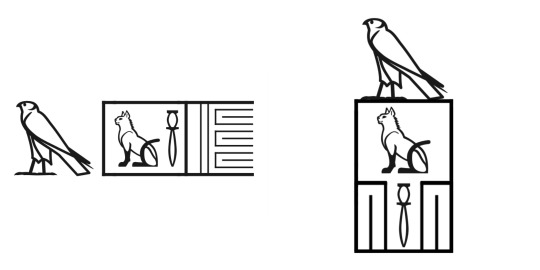
Transliteration: miw-mr
5. Bitokris (Netiqerti/“Nitokris”)
Queen Nitokris was either a cunning murderess, whose name lurks in the shadows of history… or she was a 3,000 year old transcription error. The only potential record we have of her name in hieroglyphs is the name of a pharaoh called “Netiqerti” on the Turin kings list. This could be Nitokris, or it could be a mistake made by a scribe while trying to copy the name of the name of another, completely different pharaoh.
If Netiqerti is Nitokris, then her name means “Neith (Net, a goddess) is excellent (iqerti).” Bit-iqerti/Bitokris would mean “honey (bit) is excellent (iqerti).”

Transliteration: bit-iqr.ti
#Ancient egypt#egyptology#ancient languages#This list ending up having more girl pharaohs than boy pharaohs on it which is neat (even if one of them probably wasn’t real)#A lot of the famous names of male pharaohs I first thought of using are things like ‘the justice of Ra is strong’ ‘Thoth is born’#Or some other combination of god name + religious meaning#And just switching another god out for Bastet gets very repetitive so I was only willing to put one version of that on this list#And the king Tut one works the best because Tut and Bastet are both well known enough that some non-nerds will probably be able to get it#Also because ‘The living image of Bastet’ is just a great name for a cat#The Nitokris one also follows that format but I was able to think of something that wasn’t just another god without completely changing it#And I’m so proud of myself for thinking of that. Bitokris is a great name.#I put this list in order of which of the pharaohs on it are most well known. If it was in order of the best names Bitokris would be first#and Tutankhbastet would be second#Ava has thoughts#Id in alt#ancient egypt stuff#Long post
73 notes
·
View notes
Text
“Nefertiti’s name means, appropriately, ‘the beautiful one has come.’ In the early days of [Nefertiti and Akhenaten’] marriage, Akhenaten spared no pains to show his love for her. Although she was probably a commoner like her mother-in-law, Tiye, her husband composed a royal titulary for her and gave her the additional name Neferneferuaten, ‘beautiful are the beauties of aten.’ Her titles are phrases of endearment and tenderness: ‘fair of hand, lady of grace, she at whose voice the king rejoices.’”
- temples, tombs and hieroglyphs by barbara metz
15 notes
·
View notes
Text
I saw an article earlier and it pissed me off beyond belief

We had no fucking idea what anyone looked like "in real life" (these are all portraits of real people too) before AI image creation was invented. Thank God we know what people look like
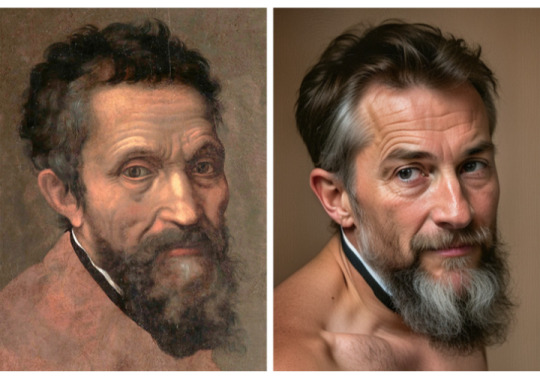
This portrait of Michelangelo is probably the least offensive of the ones I saved. However, it still shows the major issue with these which is that they aren't trying to come up with a different version of these portraits, they're just updating it with modern beauty standards. The article isn't "what they'd look like today" it's what they looked like in "real life"
Also, it took his shirt that was close to his skin tone and decided he was topless but still kept the collar??

Isaac Newton! It turns out he wasn't wearing a curly wig and instead has a shitty brown and grey mullet. Not only that, but he looked like Alec Baldwin.

Nefertiti. As we all know, ancient Egyptians never had stylized art. And she had straight hair apparently. She also didn't have eyeliner but did have mascara.
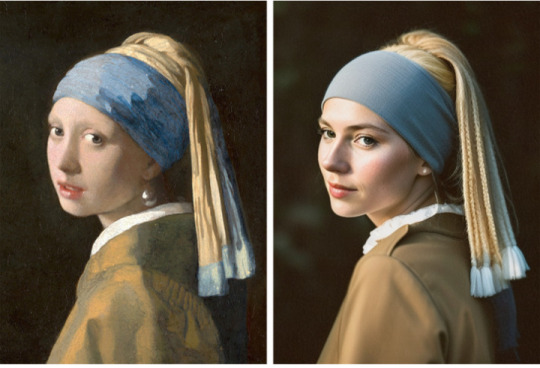
Girl With a Pearl Earring. As we can see, the painter was wrong and she didn't have a round face at all. We all know in real life everyone fit modern beauty standards and round faces don't fit that. Instead of wearing a scarf on her head, she was actually wearing a headband and had red hair that was pulled in a ponytail and then put in shitty braids?? And most importantly, the girl with a pearl earring didn't actually have a fucking pearl earring. We finally know what she looked like in real life because there's no way the painting was accurate.

Mary I, aka Mary Tudor, aka Bloody Mary. As we can tell, her hair wasn't actually red and despite the fact that Mary was 38 when this portrait was made, she actually looked like a 20 year old Instagram model. She also had dark, defined eyebrows even though that wasn't the style at the time, and instead of texture on her skin and unevenness, she actually had perfectly airbrushed and smooth skin all along. We all know that in 1554 women who didn't use soap had excellent skincare that was actually better than modern skincare since it made Mary look literally half her age.

Finally, The Mona Lisa. One of the most famous paintings in history was wrong all along because she didn't look anything like the painting. As you can see, she too looked like an Instagram model. Her nose wasn't actually long, it was round. Her forehead wasn't big, and even though the yellow tinge is probably due to the age of the painting, she still had that skin tone. Also, she had visible collarbones because not having visible collarbones is ugly and gross and no one would ever paint a disgusting, ugly fiend without visible collarbones. The Mona Lisa also had dark and defined eyebrows, she had dark lipstick despite not having any color on her lips in the painting and she had straight hair all along. Leonardo Da Vinci used creative liberties and decided that he would stylize his art and give her curly hair but in real life her hair was straight. She also didn't cover her hair with a sheer cloth, no one ever did that.
29 notes
·
View notes
Text
Here are some of my OCs in my twst stories.
Things to note:
I'm only writing down the major OCs that I came up with thus far and have at least some impact on the story. No minor characters.
I'm keeping off some of the super spoilery ones off of here. Like who the final boss is.
If you have read any of my stories, you know that I changed up a lot of the worldbuilding. If you are wondering why I'm bringing up random country names and having women working at the Monstro Lounge, that's why.
This is also in descending order of importance to the story.
I'll be adding to this as I think of more.
Night Raven is a university in mine, so everyone here is 18+.
Now that's outta the way, let's get started!

Adriana Jasmine Canul García
Twisted from Yuu/The Player Character
She is a sassy and bold former popular mean girl, who became humbled after her ex cheated on her with another girl, but still has a lot to learn in order to become a better and more balanced person. She’s also quite ambitious, analytical and a quick planner. On the flipside, she’s secretive, untrusting, too cautious, manipulative, super guarded, even to the point of hiding shit from loved ones, is “in her head” too much, over thinks things and has some huge himedere tendencies due to coming from a wealthy family. She's also, obviously, the MC.
Love Interest: Jamil Viper

Malika “Kiki” Hussain Kahlil Al-Shammari
Twisted from Sadira from Aladdin: The Animated Series
She is an outgoing and bubbly gamer girl and mechanic, who is ride or die for those she cares about, and is Addie's first female friend after being isekaied to that world. Her biggest flaw is that she can be petty and vindictive, not always thinking things through. She also has some super scaled back yandere tendencies like possessiveness, pushiness and not liking to hear “no” as an answer.

Destan Zhào
Twisted from Narissa from Enchanted
He is the handsome and charming son of two famous actors. But despite this, he's a z list actor that only pop culture gurus like Cater know about. Even his stepbrother is more well known than him! Thanks to this, he is selfish, cruel, spiteful and will do anything to become a famous celebrity like them and out stage his one-sided rival—Vil Schönheit, except putting in much effort to earn it. One of his plans to do that is to date the mysterious beauty from across the pond that is starting to become more well known with VDC and her siren-like voice.
(Warning: from this point onward there will be some OCs who haven't shown up yet in my fic. If you don't want to see any spoilers, turn back now. You have been warned.)

Name: Alyssa “Lyssa” Étienne
Twisted from Princess Tiana
She’s a hardworking, bright, resourceful and ambitious woman, who wants to open up her own restaurant one day to help her community. However, she often takes on more than what she can chew to point that she often burns out and stresses herself out a fair bit. She can be irritable, stubborn, pragmatic and one track minded, having a hard time seeing from other people’s perspectives. She also befriends Adriana.
Paired with: Azul Ashengrotto
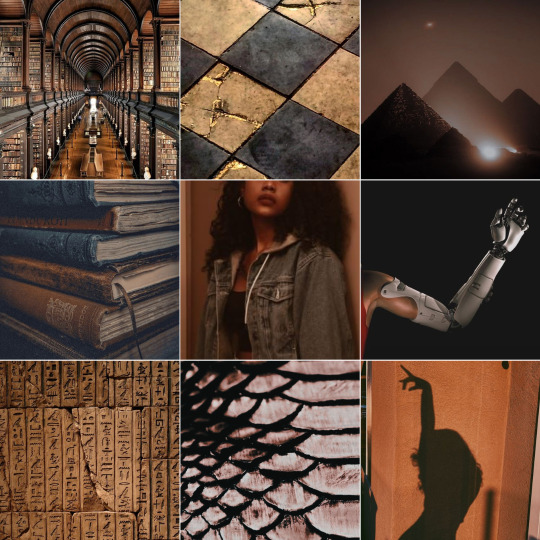
Nefert El-Massoud
Twisted from Mozenrath from the Aladdin: TV Series and Uma from Descendants
One of her teammates on the SDC team, who takes Ace's spot. On first glance, she’s a bitch. But once you get past abrasive and rougher this side of her, she is quite loving and is super ride or die for those she truly cares about. Her biggest weakness is that her ambition and lust for power can be so strong that it can override her common sense. She often makes stupid decisions, sometimes at a very heavy cost to herself. She’s a huge tsundere.

Mahina Kapule
Twisted from Lilo from Lilo & Stitch
One of her teammates for SDC, who takes Rook's spot and goes to Enchanted Rose. She's an oddball, who will do anything for her close family and friends. She's also rather rambunctious, emotional, doesn't always think things through, has a thing for getting into trouble and has a hard time seeing other's perspectives. She is also close friends with Makoa, her adoptive brother, along with Jade, Floyd and Riel.

Deimos Durand
Twisted from Phoebus from The Hunchback of Notre Dame
He's Thierry's (Rollo) right hand man and attendant at Noble Belle, who took the job without knowing what his boss was planning. Despite being rather attentive and doing his job well, he's not loyal to his boss, seeing him for the monster that he is, but is unsure about what to do about it. He's also both athletic and nerdy, being a pretty big gamer in his own right. He's rather witty and confident in himself.

Kouya Reynard
Twisted from Robin Hood
He’s a clever and quick witted fox beastman, who’s charismatic to the point that he can make you believe anything. He is very eloquent and is able to get himself out of any situation. He sometimes gets on Jamil’s bad side with his laid back and blasé nature. He’s impulsive, doesn’t always think things through, can be a bit of a lazy slacker and frequently pulls other’s into his problems.

Makoa Kapule
Twisted from Stitch from Lilo & Stitch
He's Hina's adopted brother and works at the Monstro Lounge. Despite the two being adopted, they share an extremely close bond. He's rather mischievous and wild, getting up to a lot of trouble when he's around his friends, Floyd and Riel. However, it is unwise to judge him only by his appearance. He was sorted into Scarabia for a reason. He's rather cunning, devious, manipulative and is amazing under pressure.

Emilia Khaled Al-Noury
Twisted from Iago from Aladdin
She’s a mischievous, laid back and outgoing girl, who likes to have a good time and the life of the party. She’s smart and cunning, but sometimes things can blow up in her face due to her getting in over her head and not thinking through the consequences or just her putting her foot in her mouth. She's also Jamil's best friend and ex along with Adriana's online friend, but she has no idea. Despite being inspired by two birds, she's completely human.

Guillermo Díaz Gómez
Twisted from: Jack Skellington
He’s the life of the party, who loves to have fun and tries to share that joy with others. Unlike Kalim, he has a bit of a sick and twisted sense of humour. However, he easily gets wrapped up in things and is a bit oblivious, so much that he can hurt others dear to him in the process.

Aziza Hamed Faisal bint al-Asim
Twisted from Princess Jasmine
She's the crown princess of the Scalding Sands, and is forced to marry her cousin, Kalim, despite wanting to make that choice for herself. She is compassionate, outspoken, feisty and sharp-tongued, having a strong sense of adventure and longing for freedom. However, she's also rather sheltered and naive, reckless, stubborn, proud and has a hard time seeing other's perspectives.

Carlotta "Carly" Patin
Twisted from Lottie
A spoiled rich girl from Port of Jubilee and life long friend to Alyssa. She wanted her and Alyssa to attend Enchanted Rose in order to get rich hot boyfriends from RSA and NRC. After some convincing, Alyssa comes along for the ride. While can be ditzy, careless and selfish, she cares a lot about Alyssa and will do anything to help her out.
(As a side note, I wanted to make her a tanned-skinned blonde girl, but I couldn't find a model like that, so I went with that. Just imagine her as a blonde.)

Astrid Benum
Twisted from Elsa from Frozen
She's a famous actress from the Wynderlands, who starred in plenty of queen bee roles, including some alongside Vil. Like the infamous Vil Schönheit, she has a reputation for being an icy bitch, but in reality she's loving, protective and fiercely loyal to those dear to her. However, she's also incredibly moody, secretive and insecure. Despite being Vil's ex, she is still on good terms with him and are still friends.
#twisted wonderland#twst yume#twst oc#aqua writes#aqua rambles#twst tiana#twst robin hood#twst narissa#twst mozenrath#twst iago#twst lilo#twst stitch
8 notes
·
View notes
Text
Women’s History
viking age (800 to 1050 AD)
most women in the viking age were housewives to their husbands. they often managed the farms and agricultural responsibilities. women were believed to have a choice on who their husband was to be, and even were thought to be able to back out of a marriage if they later decided they didn’t like their husband.
women spent much of their time in the house working with wool, spinning yarn, sewing, and weaving for her family. taking care of the children was a large part of a woman’s life in the viking age. women were expected to have many children to help around the house, and they were expected to breastfeed each child after they were born (since formula was yet to exist).
compared to many women during this time period, viking women had lots of freedoms. in mythology the women are portrayed as independent, confident, and powerful. however, women at this time could not appear in court or receive a share of the man’s inheritance. men had all the political power in this society. literature from this time also shows that women could often find themselves with power if they could somehow make their husband respect them.
ancient egypt (2700 to 1100 BCE)
we all know the famed cleopatra, but ancient egypt has a longer history of powerful women. one of the first female pharaohs in egypt was hatshepsut, who began her rule around 1500 BCE. hatshepsut became queen when she married thutmose ii (her half-brother), around the age of 12. upon thutmose’s death in 1479 BC, she became regent for her stepson, who at the time was an infant. seven years later, she took on the title and full powers of a pharaoh, co-ruling with her stepson. hatshepsut’s step to power garnered lots of controversy, and she had to fight to prove her legitimacy to the throne. she was born to thutmose i, and she claimed that he had appointed her his successor. hatshepsut ordered to be portrayed as a male once she claimed the throne, wanting to be depicted with a beard and a muscular body. despite this order, there are images where she appears in the traditional female regalia of ancient egypt. she tried to surround herself with supporters from key positions in the ancient government, likely hoping to elevate her status and the trust of her subjects. she began taking on ambitious projects during the time of her rule. she is notably known for the memorial temple at deir el-bahir. she also authorized a trading expedition that brought back many profits for egypt like ivory, ebony, gold, leopard skins, incense, and more. hatshephut died around 1458 BC (in her mid-40s) and was buried in the valley of the kings located in the hills of deir el-bahir. her father was reburied to be with her, in a last effort to legimitize her reign. thutmose iii had almost any trace of hatshephut erased upon his rule, so she was not known about by scholars until 1822. another female ruler of egypt was nefertiti. she married amenhotep iv. it’s unknown exactly who nefertiti’s parents were, although it’s theorized she is either the daughter of ay, or a princess from a mittani kingdom in northern syria. amenhotep iv was a monotheist, and during his reign he displaced egypt’s cheif god, amon, in favor of aten. he also changed his name to akhenten, and nefertiti took the additional name of “neferneferuaten” which means “beautiful are the beauties of aten, a beautiful woman has come”. under her husband’s rule she began to be depicted as a mirror image of him. in tombs and temples built during akhenten’s reign, nefertiti is depicted in positions of power and authority that no other queen had been seen depicted with. some instances of this were leading worship of aten, or even smiting enemies. nefertiti mothered six daughters, and after the sixth, akhenten took other wives to eventually birth king tutankhamen. king tut would eventually go on to marry nefertiti’s daughter ankhesenpaatan. around the 12th year of akhenten’s reign, nefertiti seems to disappear from record. it is possible that this is because of her death, although many historians and scholars theorize that she actually took the guise of a man to rule alongside her husband as smenkhkare. it is thought that after his death, she took place to begin undoing his religious policies, which is rooted in the fact that nefertiti paid for a scribe to make divine offerings to amun, begging and pleading with the high god to come back and get rid of the darkness in her kingdom.
the most well known of the female rulers in ancient egypt is cleopatra. she was born in either 70 or 69 BC, the first daughter of ptolemy xii. at age 18, Cleopatra became the dominant co-regent with her 10 year old brother, ptolemy xiii. her brother’s advisors quickly took action against her place on the throne, and cleopatra fled egypt to syria in 49 BC. there, she raised an army, and returned to egypt to create a civil war at pelusium. during this time, ptolemy invited julius caesar to alexandria. cleopatra allegedly snuck into royal palace to plead for caesar’s help. caesar needed for egypt to pay it’s debts owed to auletes in order to fund his own return to power in rome. many months of fighting between the forces of julius caesar and ptolemy xiii occurred until roman reinforcements showed up and the pharaoh was forced to flee alexandria. thought of have drowned in the nile river, ptolemy xiii was never seen again. caesar entered alexandria and restored cleopatra to power, where she became co-regent to another younger brother of hers, ptolemy xiv (13 at the time). julius caesar stayed with cleopatra in egypt, and in 47 BC they had a child, ptolemy caesar, who was known to the egyptian people as “little caesar”. around 46 BC cleopatra traveled with her brother and son to visit caesar in rome, as he had returned sometime before. after he was murdered in 44 BC, she returned to egypt. ptolemy xiv was murdered soon after. cleopatra was named co-regent to her son. her hold on power at this time was as much as she had ever had, being that her son was still an infant. flooding began to lead to inflation and hunger while egypt was being asked for help in a roman conflict. cleopatra sent four roman legions who caesar had stationed in egypt to help his previous allies in rome. in 42 BC, after defeating caesar’s assassins, his allies split power in rome. mark antony, one of the allies, summoned cleopatra to tarsus to explain the role she had played in the roman conflict. according to plutarch, mark antony was seduced by cleopatra and agreed to protect egypt, along with cleopatra’s crown. cleopatra returned to egypt, followed by antony. he spent two years in alexandria. in this time, him and cleopatra formed a drinking society called “the inimitable livers”. in 40 BC, after antony had returned to rome, cleopatra gave birth to a set of twins who she donned alexander helios and cleopatra selene.
commonfolk women in egypt had a duty first as a mother and wife, often having professions like weaving, perfume making, and entertainment. despite their first commitment being towards family, they were allowed to have their own businesses, own and sell property, and serve as witnesses in a court case. many women in the middle east at the time were not allowed to be in the company of men, but in egypt they could be. divorce was also an option for the women of egypt as they were allowed to use it in order to escape bad marriages. from our earliest records, women and men seem to have a fairly similar formal status. both men and women in ancient egypt were able to choose their actions, and had to suffer the consequences of their own actions. women were legally allowed to acquire, own, and sell property, with or without a husband. they were allowed to initiate court cases, as well as do many other legal proceedings under their own name, rather than that of their husband. from the evidence we’ve recovered from the old kingdom, women were often shown as merchants and priestesses (most commonly being priestess for hathor).
although these may not seem like incredible privileges, ancient egypt was well ahead of other societies at the time and their views on equality.
ancient greece
women in ancient greece had very little rights under their own name. they were unable to vote, own/inherit land, and were often only seen as mothers and wives. women were allowed to go to school, but often had more of an emphasis towards dancing and music than towards academic subjects. women in ancient greece were expected to be virgins upon marriage, and were meant to marry at a young age. in most cases, the marriages were organized by the father, often having him sign a dowry for his daughter to marry someone’s son. if they did not have a father another male guardian or relative must sign off on the marriage. married off at 13 or 14, women lived their lives at home, their husbands often seeking satisfaction outside of their marriages. there was no a place in society for single females, as roles for them did not exist.
married women in ancient greece were seen as the property of their husbands by the law. they were expected to be faithful, despite their husbands having the option of going off to prostitutes, and were expected to bear children of the men they (most often) didn’t truly love. they were seen as incapable of making decisions for themselves. if a wife were to not honor her family, she would be banned from religious ceremonies, which in this society was an incredibly huge dishonor. if she were to cheat on her husband, the husband could kill her with no legal prosecution taking place. women had few personal belongings, most of which were clothes and jewelry that had been given to them. if one’s husband were to die, they could not inherit anything from the will, instead having to remarry and let her new husband claim it. if a father were to die, they’d leave their legacy for their male children, and if the women were an only child, her husband would be the one to claim the inheritance.
despite the treatment of women in ancient greek society, there were many powerful goddesses in greek mythology. athena was attributed goddess of wisdom and military victory, aphrodite the goddess of love and beauty, demeter the goddess of agriculture, hera the patron of childbirth, artemis the goddess of the hunt, selene the goddess of the moon, so on, and so on. women in the mythology are often depicted as emotional and troublemakers, showing their view on women during the time.
middle ages (5th to late 15th century)
women during the middle ages often had jobs working the land, and they participated in agricultural duties alongside men. women in the lower class were often bakers, brewers, milkmaids, barmaids, artisans, weavers, and farmers.
women of the time could be educated, but most were only educated in domestic affairs like sewing and cooking. although, noblewomen and nuns had access to many books, the common population did not. education was mostly restricted to the upper class and the clergy. women could have a place in the clergy, but only as nuns. noblewomen had power depending on how much land they brought to their marriage, as during this time, land often equaled power. women were expected to remain “pure” until they found themselves a husband.
women in the early middle ages found themselves gaining power for multiple reasons. with the outbreak of the black death, many of the european population died. because of the lack of people, women were allowed to own businesses that belonged to their late husbands. they were also gaining rights due to the popularity of the cult of the virgin mary. despite gaining a few rights within this time, they were always viewed as second class citizens, their lives an afterthought to the men who ruled.
marriage rights in this time were decided by the lords. once a woman was married, her husband was considered to be her owner. he would control what his wife’s interests and were considered responsible for any behavior a woman may show.
the reason women had so few rights during this time was because of the rise of the catholic church, and their beliefs lying in the story of adam and eve, seeing women as temptresses and often finding them to be evil.
women’s suffrage
during the 1820s and 1830s, the campaign for women’s suffrage truly begins. reform groups were beginning to organize across the united states, and women played a prominent role in the movements. in 1848, a group of abolitionist-activists gathered in seneca falls to discuss women’s rights. the majority of the group agreed that women were their own individuals that should have their own political identities.
when the 14th and 15th amendments were introduced, the women’s suffrage movement pushed for women’s rights to be introduced. the 14th amendment that allowed black men to vote defined citizens as males. women pushed harder against lawmakers to no avail. many women began to ally with racist southerners in an attempt to prevent the 15th amendment.
in 1869, the national women’s suffrage administration was founded by elizabeth cady stanton and susan b. anthony. the endangerment towards the rights of people of color by tying the movements together resulted in the formation of the american woman suffrage association. this group fought state-by-state for the enfranchisement of women, while also supporting the 15th amendment.
in 1890, the groups merged together to become the national american woman suffrage association. this group used a new argument for women’s suffrage. previously, women were arguing for the right to vote since they were equal to men, but in 1890 women began arguing for the right to vote because they were different from men. this argument served to the advantage of the women as it addressed many political agendas.
in 1910, western states began granting women the right to vote. southern and eastern states resisted this change, not believing women were worthy of the same rights as men. in 1916, the president of the national women’s suffrage association revealed the “winning plan”. this plan was a campaign which had local and state suffrage organizations travel the country to fight for their rights.
at the same time, the national women’s party was founded by alice paul. their strategy was to create drama such as hunger strikes and protests in front of the white house.
the mission of the suffragettes was slowed due to world war one. women managed to spin the narrative in their favor, claiming that their efforts during the war showed they were just as deserving as men of the right to vote, and on august 20, 1920, the 19th amendment was ratified.
some of my favorite women throughout history
marie-antoinette-josèphe-jeanne d’autriche-lorraine (originally maria antonia joseph’s joanna von österich-lothringen) was born november 2, 1755 in vienna, austria. she was the 11th daughter of the holy roman emperor francis i and maria theresa. at 14 years old, marie-antoinette’s hand in marriage was given to heir to the throne, louis xvi. she had an unpopular image when relations between france and austria became rocky. the public viewed her to be a representative of austria, which was a view that stuck to her her entire life. louis was an incredibly inattentive husband to the young girl, so she sought out entertainment in a circle of favorites and politically vulnerable companions. marie-thérèse-louise de savoie-carignan was one of marie-antoinette’s closest friends during this time. marie had very little political duties and spent lots of time indulging in her well-known extravagant taste. many people in the public poked fun at her at the time, and began to spread outlandish and sexual rumors about the girl. it became a trend to blame all of france’s problems on marie-antoinette.
after the american revolution, france began to fall into debt, and although it wasn’t her fault, marie began to get lots of blame. as time went on, many people began labeling her an “austrian whore”.
in oct of 1789, a min of parisian women protesting dragged the entire royal family to the city and imprisoned them. in june of 1781, louis xvi and marie-antoinette fled paris, hoping to escape to austria. there was a rumor that the holy roman emperor had troops prepared to invade france. this rumor once again sparked controversy for marie, labeling her as a traitor.
the royal family returned to france ans louis was reinstated as king. in april of 1792, the radical revolutionary government declared war against austria. the french army, which was broken in pieces at this point, did not fair well. they turned their blame to marie once again. in august, a mob overthrew the monarchy and locked the royal family in tower. the next month, revolutionaries began to massacre royalist prisoners by the thousands. during this time, marie’s best friend, princesse de lamballe, was dismembered in the streets. her body parts were then paraded through paris.
in december, louis was put to trial and beheaded for treason. in july of 1793, marie lost custody of her son, who was then forced to accuse her of sexual assault and incest against him. she was sent to the guillotine for treason at age 37.
-
anne boleyn was born around 1500 to sir thomas boleyn and elizabeth howard. much of childhood was spent in hever castle in kent, as her mother was the daughter of one of the most powerful men in the country.
in 1513, anne was sent to the court of marageret of austria, later being moved to a french court. anne had originally served as a companion to louis xii’s wife, mary. after his death in 1515, she settled in france in the household of queen claude. anne stood out amongst these courts as she was talented in music and dance. in 1522, boleyn returned to england and resides in king henry viii’s court. many people admired her beauty and youth, including the king himself.
at the time, henry was married to catherine of aragon, and together they had a daughter named mary. in 1527, henry began to secretly plan an annulment for his wedding to queen catherine. the pope refused to grant the annulment to henry.
in january of 1533, henry and anne were secretly wed. on easter of that year, their wedding was made public. their marriage was only valid due to the fact that henry changed the church that england followed with. while married to catherine of aragon, england followed the rules and regulations of the catholic church, but upon his marriage with anne, the country found itself operating under the church of england.
anne bore a child, elizabeth i. unfortunately, after this, she had many miscarriages followed but no successful pregnancies. in 1536, anne was accused of adultery and plotting against the kings life. on may 2, she was arrested and taken to the tower of london. anne tried to plead innocent, but the king had already fallen for another mistress and took no mercy upon her pleas. on may 19, she was beheaded by a skilled swordsman. her final words were reported to have been, “i am come hither to die, for according to the law and by the law i am judged to die, and therefore i will speak nothing against it… i pray god save the king… for a gentler nor a more merciful prince was never there.” she was buried in the chapel of st. peter and vincula tower.
11 days after anne’s execution, henry married his mistress, jane seymour.
-
marie laveau was born september 10, 1801. she is often referred to as the most famous voodoo queen of the south. while there isn’t much information available about marie laveau, many scholars agree the story begins with her grandmother, catherine henry. catherine was said to have gone through a long line of owners before being emancipated and becoming a free woman of color. catherine took the name and surname of her first master henry roche belaire. catherine’s daughter, marguerite remained with roche until he died before being sold to another. this new master set her free.
after having gained her freedom, marguerite became a placée of henri d’arcantel. a placée performed all the duties of a wife, but were not recognized as such to the public.
marie’s father, charles laveau, was a free black man, so when marie was born, she found herself born into freedom. there is little known about marie’s childhood, but it’s believed that she lived with her grandmother.
legal records show a marriage contract between marie and jacques paris. they married on august 4, 1819. it is debated on whether or not they had children.
marie was known as the “widow paris”, although it’s unknown what happened to her husband. she became a hairdresser following his death, catering specifically to wealthy and white families. she began a relationship louis christophe dominic duminy de glapion, they were together until his death in 1885. there are no records she was in any more relationships after his death. there’s official documentation of seven children from this marriage, although some believe she may have had fourteen or fifteen.
sometime in the 1820s marie was known to have started a career in voodoo. she was known to have given private sessions and sell invocations, as well as magickal objects. later in life, she was known to visit church and do charitable acts, although many scholars believe laveau was a catholic her entire life. in her final years, she spent time with her family and continued her charity.
-
sources
https://www.ushistory.org/civ/3f.asp#:~:text=Egyptian%20women%20could%20have%20their,marriages%20by%20divorcing%20and%20remarrying.
https://fathom.lib.uchicago.edu/1/777777190170/
https://www.worldhistory.org/article/927/women-in-ancient-greece/
https://www.getty.edu/news/what-was-life-like-for-women-in-the-middle-ages/\
https://www.worldhistory.org/article/1345/women-in-the-middle-ages/
https://sites.udel.edu/britlitwiki/women-in-medieval-literature-and-society/
https://www.history.com/.amp/topics/womens-history/the-fight-for-womens-suffrage
https://www.history.com/news/9-things-you-may-not-know-about-marie-antoinette
https://www.britannica.com/topic/woman-suffrage
https://www.britannica.com/biography/Marie-Antoinette-queen-of-France
https://www.hrp.org.uk/tower-of-london/history-and-stories/anne-boleyn/#gs.trtum7
https://www.britannica.com/biography/Anne-Boleyn
https://louisiana-anthology.org/encyclopedia/l/whitaker--laveau.html
https://www.womenhistoryblog.com/2012/07/marie-laveau.html
#women#international women's day#women history#women's suffrage#women's rights#viking women#greek women#Middle Ages women#marie antoinette#marie laveau#anne boleyn#misunderstood women
11 notes
·
View notes
Text
When Women Ruled the World: Six Queens of Egypt by Kara Cooney

Read time: 6 Days
Rating: 3.5/5 Stars
The Quote: Once upon a time, there were women who ruled the world. Six of them—Merneith, Nerferusobek, Hatshepsut, Nefertiti, Tawosret and Cleopatra—climbed the highest the wielded the most significant power: not as manipulators of their menfolk but as heads of state. Each started as a queen—a mere sexual vessel of their king—but each became chief decision-maker, five of them served as king outright. — Kara Cooney
When Women Ruled the World is perhaps unsurprisingly divided into six sections, one for each of the six queens, an introduction and a conclusion (both of which are on a theme). The six queens are Merneith, Nerferusobek, Hatshepsut, Nefertiti, Tawosret and Cleopatra. There are other women of power noted some are queens others are just women in positions of power in the Egyptian system. These include Neithotep, Tetisheri and Ahmes-Nefertari. The Queen/ King's Horus names are included and explained, all of them are interesting. Nefertiti and Hatshepsut's particularly so. A suggestion for those new to academic non-fiction, if you have an interest in the added detail provided by the notes, try using a second bookmark. But the narrative style used by Kara Cooney means you can skip them with ease. Same are added commentary, some are simply sources and some are where to look for more information.
🤎 Merneith — Queen of Blood (ca 3000-2890 B.C.)
Merneith is the first of the six queens ruling as a regent for her son, Den during the 1st dynasty. Her entry acts as an overview of the kingship in ancient Egypt and the role of the Queen in it. Merneith provides something of a fascinating study in brutal strength and the things one must do to survive. Little is truly known of her really but I like the way this is written. The style empowers her and allows her ferocity to shine.
As much as this is about the women Den himself is interesting, The First King of Upper and Lower Egypt. Den must have greatly respected Merneith burying her in a tomb fit for a king though with fewer human sacrifices (nothing to do with gender everything to do with afterlife necessity).
💚 Nerferusobek — The Last Woman Standing (1777-1773 B.C.)
Nerferusobek has one of the best name meanings, beauty of Sobek. "Named for the fierce god of the Nile inundation, a deity of aggressive sexuality and violent fecundity." (p.77). Her crowned names are Beloved of Re; Daughter of the Powerful One; Mistress of the Two Lands; Stable of Appearances. This entry continues the discussion on succession discussing royal reproduction practices, including harems and a quite interesting section on incest (all neat logic no ick factor). There is an insightful and logical comment on harems that I quite appreciated. Her subtitle comes from why she was even sitting on the Horus Throne, Nerferusobek was the last royal of the 12th Dynasty, a product of incest (probably) causing sterility. She perhaps willingly but perhaps reluctantly took the throne to steady the ship. She had little to gain and was little threat to the status quo, with no chance of a male heir. Her short reign allows the board to be reset and allowed all the major power players to get their viable sons into position for the start of the next dynasty. Nerferusobek is almost the exact opposite of her female predecessor, it is easy to admire her patience and intelligence.
💛 Hatshepsut — Queen of Public Relations (1473-1458 B.C.)
"Hatshepsut broke all the rules."(p.99) is the first line of this section and it is the perfect summation of her rule. Let's start with the pronunciation of her name as included by Kara Cooney Hat-shep-suit. One of the cutest moments in this section is what the young princes were called... nestlings look it made me smile okay. There was an interesting moment for me. The extremely young pharaoh, the two-year-old on the throne, could only happen in ancient Egypt with its focus on mythos and god-kings. Anywhere else would be civil war. Cooney has a great reading on Hatshepsut's potential romantic attachments. They weren't needed for her to maintain power, there was little place in the historical record for them. I did like the section on Hatshepsut and one day I will get around to reading Cooney's Hatshepsut work but not today. This is the longest section of the six, unsurprising really, Cooney wrote The Woman Who Would Be King dedicated entirely to Hatshepsut. As that book does exist there is less discussion and commentary in the notes they are nearly entirely sources. In some ways, I would consider her the opposite side of the coin to Merneith. Where Merneith held her position with strategic blood and violence Hatshepsut used ideology and human relations. Especially ideology.
For her countrymen there was no longer any point referring to her as "queen." That title was only used for women subservient to their sovereign. — Kara Cooney (p.84)
🧡 Nefertiti — More Than Just a Pretty Face (1338-1336 B.C.)
Ideology was also important in Nefertiti's reign. Nefertiti was actually treated as an equal to her husband during his reign. An equal female to his male god. (Because yes he was a 🤡) What is clear is that in any other time, any other place, her husband, the completely bonkers Akhenaten would likely have faced regicide. There isn't a consensus that she even ruled alone, if she did she ruled with her daughter taking the role of Queen, the feminine role to her masculine. So much of everything around her is dependent on which school of Egyptology you belong to. It can be difficult. Was she ever a King in her own right? 🤷🏼♀️ Nefertiti is... complicated. It had to make many comments on her. So much of Nefertiti's reign in her own right is a matter of superposition. But I'm not even sure I knew that I ever knew the potential connection between King Tut and Nefertiti.
💙 Tawosret — The Survivor (1188-1186 B.C)
Tawosret comes from a very different period of Egyptian history. She was needed by Egypt but not welcome. Women were greatly distrusted in any position of power. She is a mixture of all the previous queens except maybe Nefertiti. It all starts with a discussion of how times had changed in Egypt and the Ramesside period. Her crowned names are Daughter of Re, Beloved of Amun; Mighty Lady, Chosen of Mut; Strong Bull, Beloved of Ma'at; Founder of Egypt, who vanquishes foreign countries. Using the title Chosen of Mut is a brilliant ideological move, ditto Beloved of Ma'at. Mut was a mother goddess, her name means mother, she's a primordial deity. Ma'at was a deity tied to balance and justice, a key to the processes of entering the afterlife. All these women knew how to manipulate the greek pantheon for their own power. There is a lovely quote in here about human society and feminine rule. "Many of history's women could rise to power only within extraordinary crisis and, when the immediate predicament had abated, were unceremoniously pushed aside. Indeed, the catastrophe itself was usually blamed on the woman's rue, a Catch-22 if there ever was one." (p.240). Tawosret feels like something akin to one of the British succession crises (there have been three), but one, in particular, ended with a queen on a throne decided from a piece of genetics.
💜Cleopatra — Drama Queen (51-0 B.C.)
If you are going to know any of the Queens it will definitely be Cleopatra. Cleopatra was a true power player, a power player that would likely succeed even in the modern-day, maybe more so in the modern-day. Sex is power and she was totally unafraid to use it but that is far, far from all she was. Cleopatra was also strategic, intelligent and openly ambitious. Even if you know Cleopatra you will likely find information in here you don't know. For example, Cleopatra was in Rome when Ceaser was assassinated or the import of Ceaserion. There was an amusing moment for me when I realised Cleopatra essentially bought Mark Antony, she wanted his power for some form of legitimacy, he needed money to pursue his military campaigning. Cleopatra's section ends with a quick section on what happened to her children. While her sons were killed her daughter, Kleopatra Selene was married to a Roman ally and well. She went on to become a queen and clearly inherited her mother's intelligence. What I didn't know was that Kleopatra Selene and Juba II's son was killed by Caligula just for being descended from Marc Antony and Cleopatra.
I did enjoy this. I enjoyed learning about new powerful women. Women who used power in different ways to maintain the stability of their Egypt and their position. There is some well-written background included too, like the way an heir was chosen and reproductive practices. I had completely missed in all my time reading about ancient Egypt the connection between Nefertiti and Tut. I do appreciate the use of the modern to help readers understand, Trump, Clinton, the Saudi Royal family and just general or universal expectations moments experienced by women.
Let me justify the rating. While I was reading this wasn't a 3-star book. But it feels more like a 3.5-star book upon reflection, I'm rounding down. Cleopatra's section let me down a little. I was confused for quite a bit of it, to be honest, it was a bit of a slog to get through. In the previous paragraph, I mentioned the moments experienced by women, that is also a bit of a flaw. This feels like it is squarely aimed at women. And perhaps relying too much on female experience and contemporary references.
#when women ruled the world#six queens of egypt#kara cooney#nonfiction#book review#ktreviews#read 2022#merneith#hatshepsut#nefertiti#cleopatra#tawoset#nerferusobek#booklr
11 notes
·
View notes
Photo



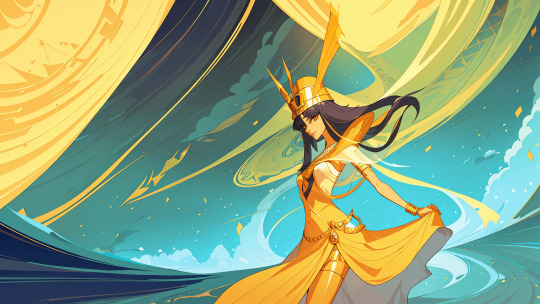






Nefertiti - the beautiful one has come forth (1920x1080)
Give us a follow on Twitter: @StableDiffusion
H/t hjkiddk
#digital art#aiart#StableDiffusion#stable diffusion#ai artwork#ai art#stability ai#art#ai#generative#generated artwork#deep learning#ai generated images#generative ai#dall e ai#ai generated#unreality
5 notes
·
View notes
Text

Great Hymn to the Aten (excerpts)
How manifold it is, what thou hast made!
They are hidden from the face (of man).
O sole god, like whom there is no other!
Thou didst create the world according to thy desire,
Whilst thou wert alone: All men, cattle, and wild beasts,
Whatever is on Earth, going upon (its) feet,
And what is on high, flying with its wings.
The countries of Syria and Nubia, the land of Egypt,
Thou settest every man in his place,
Thou suppliest their necessities:
Everyone has his food, and his time of life is reckoned.
Their tongues are separate in speech,
And their natures as well;
Their skins are distinguished,
As thou distinguishest the foreign peoples.
Thou makest a Nile in the underworld,
Thou bringest forth as thou desirest
To maintain the people (of Egypt)
According as thou madest them for thyself,
The lord of all of them, wearying (himself) with them,
The lord of every land, rising for them,
The Aton of the day, great of majesty.
You are in my heart,
There is no other who knows you,
Only your son, Neferkheprure, Sole-one-of-Re [Akhenaten],
Whom you have taught your ways and your might.
[Those on] Earth come from your hand as you made them.
When you have dawned they live.
When you set they die;
You yourself are lifetime, one lives by you.
All eyes are on [your] beauty until you set.
All labor ceases when you rest in the west;
When you rise you stir [everyone] for the King,
Every leg is on the move since you founded the Earth.
You rouse them for your son who came from your body.
The King who lives by Maat, the Lord of the Two Lands,
Neferkheprure, Sole-one-of-Re,
The Son of Re who lives by Maat. the Lord of crowns,
Akhenaten, great in his lifetime;
(And) the great Queen whom he loves, the Lady of the Two Lands,
Nefer-nefru-Aten Nefertiti, living forever.
8 notes
·
View notes
Text

An Egyptian mural was so naturalistic that researchers could identify the birds painted on there.
This stunningly detailed masterpiece of ancient Egyptian art, discovered in a palace, illustrates in exquisite detail the species of bird it depicts. The images of nature that this work brings to life must have created an oasis of relaxation and recreation, allowing those in the royal palace to take a break and bask in the beauty of the natural world.
The artwork was discovered at Amarna, the location of the capital city of Pharaoh Akhenaten (1347–1332 BC). Excavations in 1924 uncovered a palace belonging to Meritaten, daughter of the pharaoh and Nefertiti, with several lavishly decorated rooms. One of these, the so-called Green Room, has a rare depiction of birds in a wild papyrus marsh with no signs of human activity.
So which birds were successfully identified? Read on to find out!
Despite the quality of these images, they have received relatively little attention. As such, not all the bird species in the art had been identified in the nearly 100 years since it was found. Attempts at conserving the painting in 1926 accidentally damaged and discoloured the artwork.
Researchers Christopher Stimson and Barry Kemp of Oxford University have identified 12 bird species depicted.
Of birds and muses..
Their remarkable research resulted in the uncovering of multiple bird species unseen before, including shrikes and wagtails, which supplement the previous discovered kingfishers and pigeons. It only get more interesting!
Evidently, it seems the ancient artists had further intentions; the inclusion of migrant birds marked with a triangle, maybe signifying a specification of season, as well as pictures of rock pigeons which are alien to the papyrus swamps, but could be found in the surrounding cliffs.
An exciting hypothesis formulated by the researchers was that these birds may have been included for a more untamed atmosphere, and the realism of the piece carries out this deeply immersive idea.
The result: what has come to be called the Green Room has arguably become a haven of tranquillity.
"No one knows for sure, although the Green Room was most likely a place of rest and relaxation. Illustrations in rock tombs at Amarna possibly show similar settings where women relax, socialize and play music," said Dr. Stimpson, "In the Green Room, the atmosphere was likely enhanced by the visions of nature. The calming effects of the natural world were as important then, as they are (more than ever) today."
As posted in Antiquity.
Credit: Antiquity (2022). DOI: 10.15184/aqy.2022.159
2 notes
·
View notes
Text
Artist Research:


Venus of Willendorf:
The venus of Willendorf is dated back to around 30,000 years ago and is made of Oolitic limestone.I decided to research this piece of sculpture as I was interested in creating something from clay.The Venus of Willendorf is supposedly a symbol of fertility and beauty for women.When I first saw this piece I wouldn’t have assumed that but on further investigation this idea of curves and bigger chests perhaps back then could have supposedly been a great symbol of beauty.This idea of beauty has shifted a lot throughout different time periods.
Bust of Nefertiti:
The life sized bust of Queen Nerfertiti is dated back to 1345 BC and is believed to have been made by Thutmose, an ancient egyptian sculptor.I decided to look into this Eyptian sculpture as ancient egypt is know for having a great fixation on their looks from the findingsTheres evidence of makeup,hair,mirrors so we can assume they took great pride in their looks.This bust was excavated in 1912.This bust of Nefertiti is quite strikingly beautiful.Nefertiti means “the beautiful one has come”.This idea of beauty had been around for centuries and its really interesting to see how different their standards of beauty were back then.
I would like to use this research to look at beauty standards today in comparison to this.I would like to make some sculptural work from it.
2 notes
·
View notes
Text


Nefertiti was King Tut's step-mom. Well, I mean, sort of. She was his dad's wife, probably his primary wife, but Tutankhamun's mom, Kiya, was also his dad's wife, probably at the same time.
Nefertiti was the Great Royal Wife of Akhenaten, the 18th dynasty pharaoh of ancient Egypt. She was a powerful and influential figure in her husband's court, and she played a key role in the religious reforms that Akhenaten instituted.
Nefertiti's name means "A Beautiful Woman Has Come." She was born in the early 14th century BCE, and she may have been the daughter of Ay, a high-ranking official in the court of Akhenaten's father, Amenhotep III.
Nefertiti and Akhenaten were married in the first year of his reign, and they had six daughters together. They were a powerful couple, and they helped to usher in a new era of religious reform in Egypt. Akhenaten abandoned the traditional polytheistic religion of Egypt and instead worshipped a single god, the sun god Aten. Nefertiti was a strong supporter of her husband's religious reforms, and she was often depicted in art wearing the Aten crown, which was the symbol of Atenism.
Nefertiti was a highly skilled diplomat, and she played a key role in Akhenaten's foreign policy. She corresponded with foreign rulers, and she even led a diplomatic mission to Mitanni, a powerful kingdom in northern Syria.
Nefertiti was a beloved figure in Egypt, and her beauty and grace were legendary. She is often depicted in art wearing elaborate jewelry and clothing, and her face is always serene and beautiful.
Nefertiti disappeared from the historical record in the 12th year of Akhenaten's reign. No one knows for sure what happened to her, but there are a few theories. One theory is that she died, another theory is that she was exiled, and a third theory is that she may have assumed the position of pharaoh, taking a new name and identity as a man.
#atenism#aten#nefertiti#pharoah#egypt#ancient egypt#antiquity#akhenaten#tutankhamun#historical reconstruction#history#midjourney#ai#ai art#ai image#ai generated
0 notes